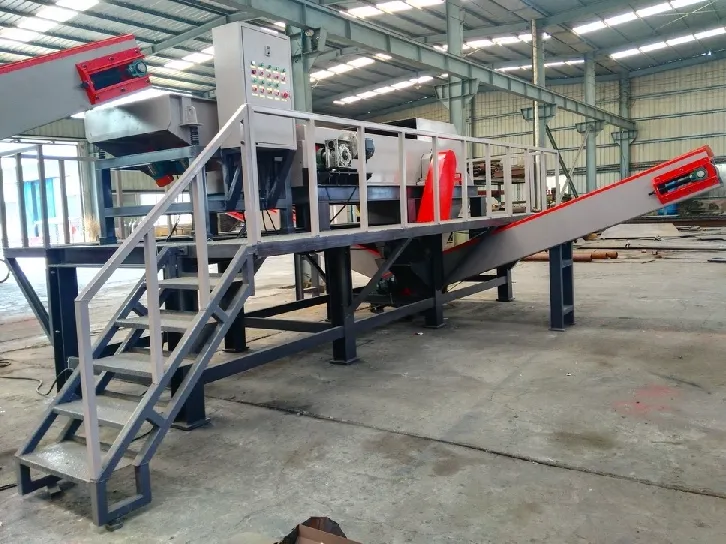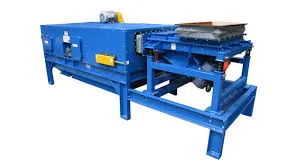Iron scrap shredder machines have revolutionized the recycling industry, offering a seamless and efficient way to process discarded metal into reusable materials. Drawing from years of experience and deep expertise in the machinery sector, this article delves into the superior features, advancements, and the ensuing benefits of modern iron scrap shredders, outlining why they stand as a cornerstone in sustainable industrial practices.

A pivotal aspect that elevates the contemporary iron scrap shredder machine is its cutting-edge technology. The inclusion of advanced control systems allows operators to finely tune the shredding process, ensuring maximum output and minimal wastage. This technological sophistication is not just about speed but extends to precision, facilitating the breakdown of metal into uniform pieces. Consistency in output size is crucial, as it directly impacts the downstream processes such as sorting and smelting. Manufacturers of these machines have integrated intuitive interfaces, providing operators with real-time data and analytics to monitor performance, enhancing operational efficiency and reducing downtime.
From a professional standpoint,
the diverse functionality of an iron scrap shredder makes it a versatile tool in metal recycling plants. Equipped with robust blades made from high-grade steel, these machines can tackle a wide array of metal waste, ranging from bulky iron appliances to delicate sheet metals. The durability of these components reflects the machine's capacity to handle high volumes of material, distributed across varying densities and alloy compositions, without compromising on performance. This versatility underscores the importance of selecting a shredder with customizable configurations, tailored to specific industrial requirements.

The expertise ingrained in designing these machines translates into enhanced safety features, a key consideration for any industrial equipment. Automated feeding systems minimize human interaction, significantly reducing the risk of accidents. Modern iron scrap shredders are also equipped with sensors that detect instances of jam or overload, instantly shutting down the system to prevent damage to the machine and injury to personnel. These safety protocols reflect a broader trend in industrial machinery, emphasizing not just efficiency, but a holistic approach to operational integrity and worker safety.
iron scrap shredder machine
Addressing the aspect of authoritativeness, manufacturers of these shredders rely on a wealth of research and development to refine their products continually. Partnerships with academic institutions and industry experts are commonplace, facilitating a deeper understanding of metallurgical processes which in turn informs the design of more effective shredding technology. This commitment to innovation rests on a foundation of rigorous testing and adherence to international standards, ensuring each machine meets stringent benchmarks for quality and performance.
Trustworthiness in the realm of industrial machinery is often gauged by a manufacturer's track record and the reliability of their products. Leading brands offer comprehensive warranties and aftermarket support, providing customers with peace of mind and ensuring that any technical glitches are swiftly addressed. Customer testimonials and case studies also play a pivotal role in this regard, offering insight into real-world applications and the tangible benefits experienced by businesses that have adopted this technology.
In conclusion, the iron scrap shredder machine stands as a testament to the convergence of technology, expertise, and a commitment to sustainable industrial practices. It offers not only an efficient solution to metal waste management but also contributes to the broader goal of resource conservation. As industries continue to prioritize environmental sustainability, the role of advanced shredding technology will undoubtedly expand, championing a cleaner, more efficient approach to metal recycling around the globe.


